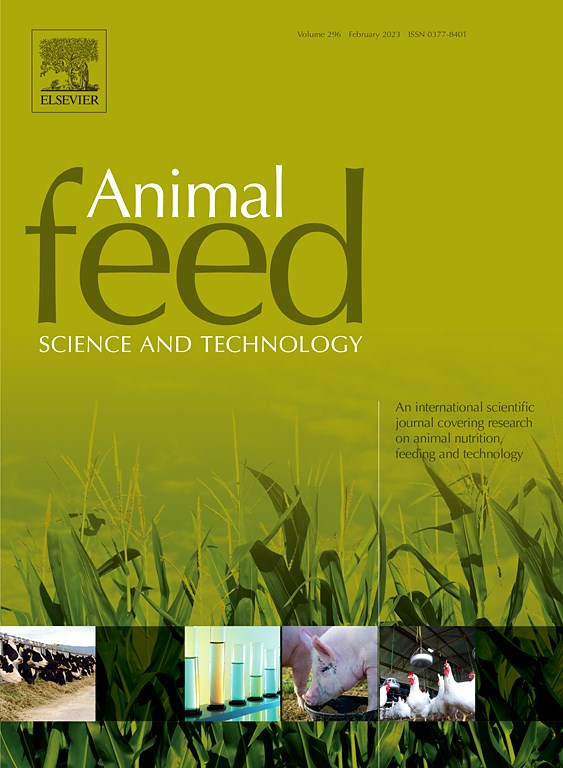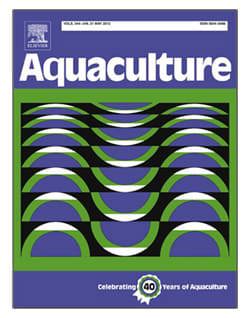Effect of feeding frequency on performance, nutrient digestibility, energy and nitrogen balances in juvenile African catfish (Clarias gariepinus) fed diets with two levels of crystalline methionine

Abstract
In this study, the effect of feeding frequency and its interaction with crystalline methionine supplementation level on performance, digestion, energy and nitrogen balances was assessed. The experiment had a 2 × 4 factorial design, testing two levels of crystalline methionine (Met) and four feeding frequencies. The two diets contained Met either just fulfilling or exceeding the Met requirement of African catfish (Clarias gariepinus). African catfish with initial mean weight of 44 g were allocated to one of four feeding frequencies (six, two, one time (s) per day and two times out of three days) in a recirculation aquaculture system. Fish were fed an equal daily ration for 32 days. Performance parameters, nutrient digestibility, body composition, and nutrient balances were evaluated. Except for digestible nitrogen intake and dry matter body content, none of tested parameters was affected by the interaction between dietary Met levels and feeding frequencies. Growth, energy and nitrogen gain were unaffected by feeding frequency as well as dietary Met level. FCR was low, being 0.84 averaged over all treatments. However, feeding frequency affected feed intake and the apparent digestibility coefficient (ADC) of nutrients. Feeding at lowest frequency was accompanied by a lower feed consumption compared to other frequencies (P < 0.001). At higher frequency, ADC was higher for macronutrients but lower for phosphorus and magnesium. It was concluded that the asynchronous availability of AA for protein synthesis, which is often suggested to cause a sub-optimal utilization of crystalline AA, was not influenced by feeding frequency. However, feeding at a low frequency hampered daily feed intake of African catfish. Whereas, higher frequency improved nutrient digestibility, though it did not result in improved growth probably due to the higher energy required for maintenance related to physical activities at higher frequency.

